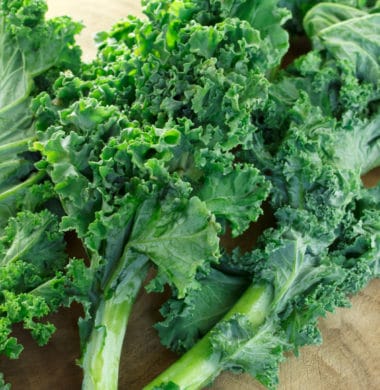The Power and Versatility of Kale

Every year we hear about a trending “superfood” in the media. Sometimes its merited, and other times less so. But most of the time the effects of a particular superfood are exaggerated by marketers. In the case of kale however, the rumors are completely true. Kale, otherwise known as borecole, is a green or purple leaved vegetable similar to cabbage. Kale is easily grown and cultivated across the world, and thus can be found at your local grocery store. This is convenient, when you consider just how nutritional and versatile kale really is. Just ask any of the heart doctors at South Denver Cardiology. They’re likely going to strongly encourage implementing kale into your diet.
Nutritionally speaking, kale sets amazing standards for other foods. One cup of chopped kale contains the following:
- Only 33 calories
- 9% of your daily value (DV) of calcium
- 206% DV Vitamin A
- 134% DV Vitamin C
- 684% DV Vitamin K
- Good source of copper, potassium, iron, manganese, and phosphorus.
- Heavy in antioxidants
- High in fiber
Let’s just break all that down. Kale is essentially a low calorie, mineral rich, vitamin rich, antioxidant rich, fiber-intensive food. When compared to plain old romaine lettuce, which has about 2/3 the vitamin A content of Kale and isn’t really a significant source of anything else beyond fiber, kale dominates in every nutritional category. A stream of kale in the diet can help you maintain and strengthen your heart.
So we’ve established just how healthy kale is for your body. How can you use it? Well that’s the beautiful thing about kale. Because of its relation to cabbage leaves, it can easily be substituted for any in any recipe that requires leafy greens. A kale salad will taste just as good as a lettuce one, with much more of a nutritional kick. But unlike lettuce, kale can be cooked too. Much like spinach, cooking kale makes the flavor of the leaf stronger. Any recipe that requires cooked spinach can be substituted with cooked kale as well. It should be noted, that like any cooked vegetable, many of the nutrients are lost in the cooking process. If you want to try to preserve the plethora of nutrients found in kale, its typically recommended that you steam the vegetable. Finally, if you’re feeling particularly health conscious, you could even make a kale smoothie. Ostensibly, a kale smoothie may sound unappetizing, and it doesn’t exactly do itself any favors aesthetically either (the drink is a foggy, forest green color) However, when you actually taste it, you’ll be pleasantly surprised. A good kale smoothie will mix in some fruits as well to add flavor, like blueberries, pineapples, or even strawberries. Unlike cooking kale, this process retains the nutrients found in kale, while supplementing those nutrients with nutrients found in the fruits you use as well. It’s a low-calorie, tasty drink that will have your body on a nutritional hi.
How To Use This Information
Here in Colorado, heart health is very important to the locals. Maintaining a healthy lifestyle is part of what it means to be a Coloradoan. So to make your Colorado cardiologist happy, make sure you add kale to your diet as often as you could, and you will be guaranteed to be making less trips to the doctor.
- Lifestyle Factors That Increase Your Risk of Heart Disease - May 26, 2025
- 6 Tips for Exercising Outdoors with a Heart Condition - May 19, 2025
- Lifestyle Changes That Can Help Manage Arrhythmia - April 30, 2025
Sign Up
As with any health concerns, your specific treatment program should be discussed thoroughly with your primary care physician as well as any specialists who may need to be consulted – like a cardiologist.
Sign Up
